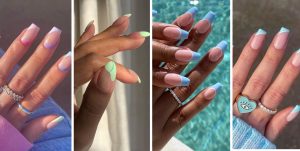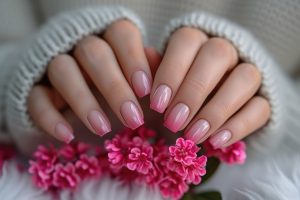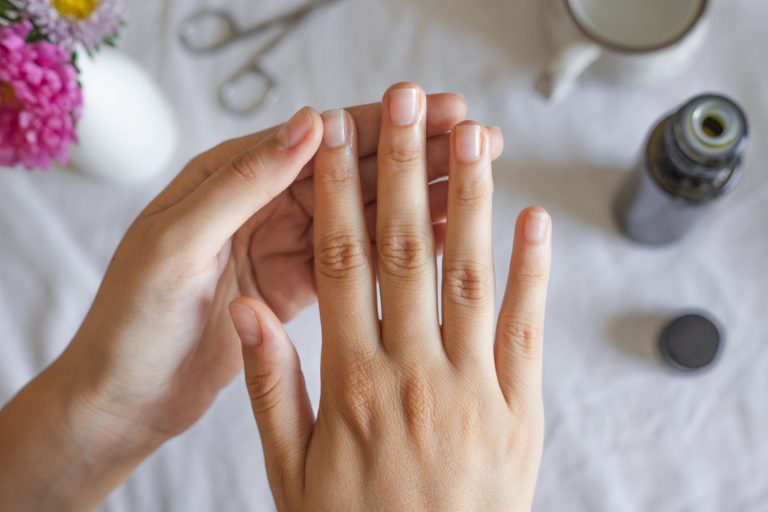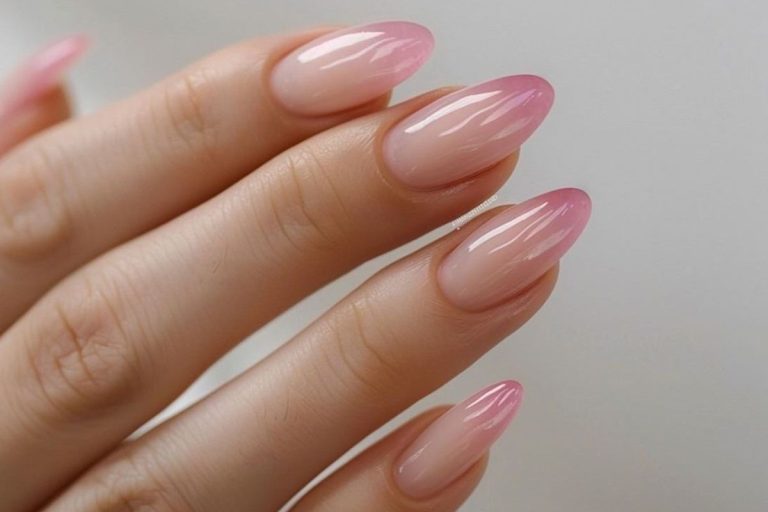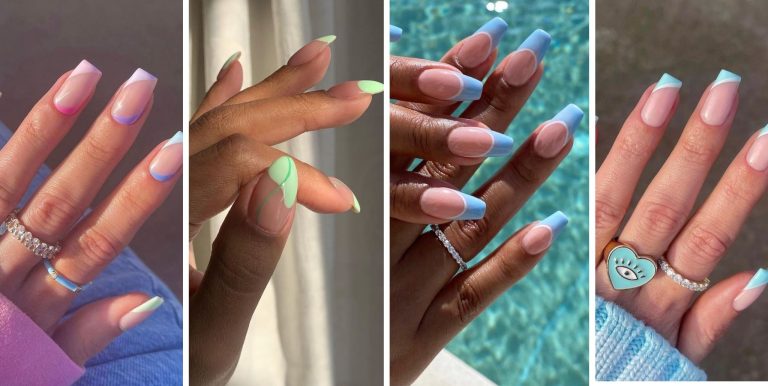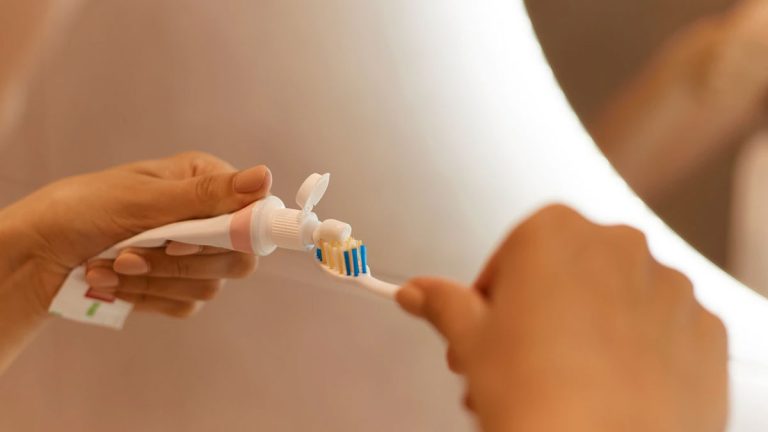To better understand how and why nails split, let’s go back to the basics! Nails are made up of about twenty layers of keratin. Normally, we can’t tell them apart: they are firmly attached to each other. When these layers separate, the nails split and take on an unsightly “crumbled” appearance. Split nails are weakened nails. It’s not uncommon to encounter other problems at the same time: ridges, soft, and brittle nails, etc.
External factors generally cause nail splitting. Some of the most common causes include:
- Prolonged contact with water, for example, from frequent hand washing or washing dishes. Certain jobs that often involve having hands in water, such as hairdressing or housekeeping, can contribute to the appearance of split nails;
- The use of harsh products. If your nails come into contact with detergents and chemicals (household products, paint, etc.), they risk becoming weakened and therefore splitting. This also applies to repeated manicures: the repeated use of nail polish and nail polish remover, as well as the application of false nails, can damage the nail. Therefore, it is particularly important to choose the right nail supplies;
- A lack of hydration. If nails are too dry, the keratin layers will tend to separate and the nails will become brittle;
- Vitamin deficiency. Nails need a number of nutrients and vitamins to stay healthy. This is particularly the case for zinc, iron, and B vitamins.
- Repeated trauma to the nails. This can include using your nails as a tool, for example, to scratch, open an object, or perform certain activities such as DIY or gardening without hand protection. Biting or nibbling can also contribute to splitting. Therefore, you should regularly use a professional manicure kit to pamper your nails and avoid them from cracking;
- Finally, certain illnesses or medications can affect the quality of the skin, hair, and nails. Splitting nails are therefore a side effect of the condition or its treatment.


